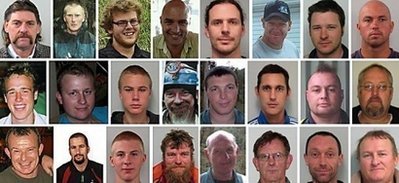A massive explosion deep inside a New Zealand coal mine Wednesday erased hopes of rescuing 29 miners caught underground by a similar blast five days ago. The prime minister declared it a national tragedy.
Even if any of the missing men had survived the initial explosion on Friday at the Pike River Mine, police said none of the men could have survived the second. Both blasts were believed caused by explosive, toxic gases swirling in the tunnels dug up to 1 1/2 miles (2 kilometers) into a mountain that had also prevented rescuers from entering the mine to search for the missing.

“There was another massive explosion underground, and based on that explosion no one would have survived,” said police superintendent Gary Knowles, in charge of the rescue operation. “The blast was prolific, just as severe as the first blast.”
It was one of New Zealand’s worst mining disasters. The country’s industry is relatively small compared to other nations and considered generally safe, with 210 deaths in 114 years after the most recent tragedy.
It also devastated families who — buoyed by the survival tale of Chile’s 33 buried miners — had clung to hope for more than five days that their relatives could emerge alive.
“New Zealand has been devastated by the news that we have all been dreading,” New Zealand Prime Minister John Key said in a nationally televised news conference. “This is a national tragedy.”
He said flags would fly at half staff on Thursday and Parliament would adjourn its session in respect for the dead men.
Officials said only investigations still to come would confirm the exact cause of Wednesday’s explosion.
Pike River Coal chief executive Peter Whittall said rescue teams were not doing anything that could have set it off, and that conditions inside the mine were such that it could have happened at any time.
“It was a natural eventuation, it could have happened on the second day, it could have happened on the third day,” he told reporters.
Family members who had gathered for a regular daily briefing on the rescue operation’s progress were instead told of the second blast and that no one could survive, officials said. Some collapsed, while others shouted at police, said Tony Kokshoorn, the mayor of Greymouth town near the mine who was present at the meeting.
“It is our darkest day,” Kokshoorn said.
Laurie Drew, father of 21-year-old miner Zen, said rescuers should have gone into the mine on Friday, saying he believed that explosion would have burned off most of the dangerous gases.
“They had their window of opportunity that Friday night, and now the truth can’t come out because no one alive will be able to come out and tell the truth about what went on down there,” Drew said. “The only thing that’s going to make matters worse is if we find … out that people were alive after that first blast.”
Knowles said that at all times after the initial blast, entering the mine was simply too risky because of high gas levels and evidence of a smoldering coal fire underground that could be an ignition source.
Energy Minister Gerry Brownlee said a range of official inquiries would probe the cause of the disaster and whether it could have been prevented.
Whittall said no decision had been made yet on whether the mine would be sealed or what the next step would be.
“We can’t still go in to an unsafe mine. It’s just as unsafe now as it was two hours ago, the gas will still be coming out of the coal, there’s still an ignition source, there’s no doubt burning methane from that explosion,” he told reporters. “But we want our boys back and we want to get them out.”
The second blast came hours after the first progress in days for the rescue attempt, when a drilling team broke a narrow shaft through to the section of the mine where the missing workers were believed to have been. And two robots had crawled their way into the tunnel, giving authorities their first view of the inside of the mine.
But officials had become increasingly pessimistic about the chances of pulling the men alive from the mine. Nothing had been heard from the missing miners since the initial blast.
New Zealand’s mines have been safe historically. The worst disaster was in 1896, when 65 died in a gas explosion at a mine on the same coal seam as the latest tragedy. The most recent was in 1967, when an explosion killed 19 miners in a mine near the Pike River site.
While conditions were very different, the New Zealand event drew initial comparisons with the rescue last month of 33 workers trapped 69 days in a gold and copper mine in Chile. BW

Leave a Reply
You must be logged in to post a comment.